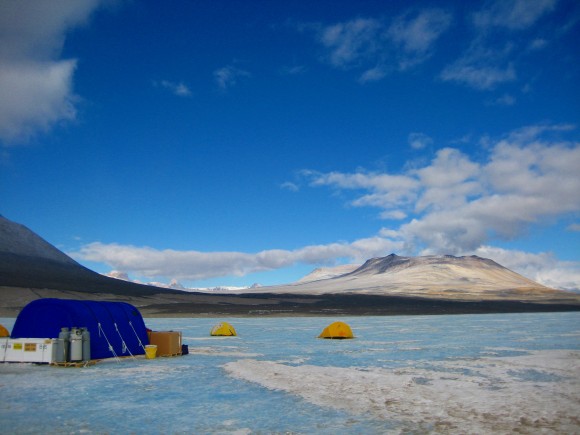Where there’s water there’s life, even beneath 60 feet of ice n permanent darkness and subzero temperatures.
Researchers have discovered ancient microbes living -13ºC water in East Antarctica’s Lake Vida. Their discovery was published in a paper in the current issue of the Proceedings of the National Academy of Science.
The researchers estimate that the thriving colony has been isolated for more than 2,800 years. The microbes live in a brine of more than 20 percent salinity that has high concentrations of ammonia, nitrogen, sulfur and supersaturated nitrous oxide – the highest ever measured in a natural aquatic environment.

Nathaniel Ostrom of Michigan State University zoologist is co-author of the paper. Ostrom said:
It’s an extreme environment – the thickest lake ice on the planet, and the coldest, most stable cryo-environment on Earth. The discovery of this ecosystem gives us insight into other isolated, frozen environments on Earth, but it also gives us a potential model for life on other icy planets that harbor saline deposits and subsurface oceans, such as Jupiter’s moon Europa.
On the Earth’s surface, water fuels life. Plants use photosynthesis to derive energy. In contrast, at thermal vents at the ocean bottom, out of reach of the sun’s rays, chemical energy released by hydrothermal processes supports life.
Life in Lake Vida lacks sunlight and oxygen. Its high concentrations of hydrogen gas, nitrate, nitrite and nitrous oxide likely provide the chemical energy used to support this novel and isolated microbial ecosystem. The high concentrations of hydrogen and nitrous oxide gases are likely derived from chemical reactions with the surrounding iron-rich rocks.
Consequently, it is likely that the chemical reactions between the anoxic brine and rock provide a source of energy to fuel microbial metabolism. These processes provide new insights into how life may have developed on Earth and function on other planetary bodies, Ostrom said.











